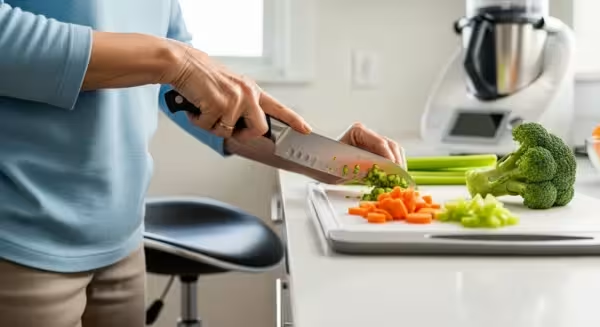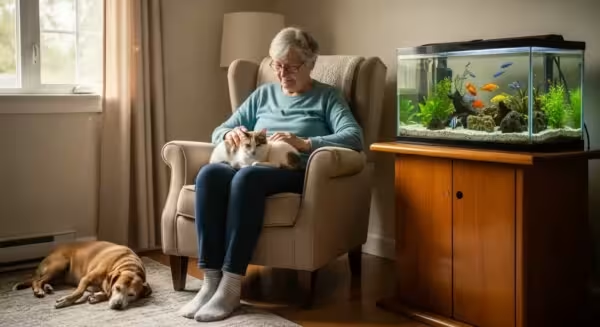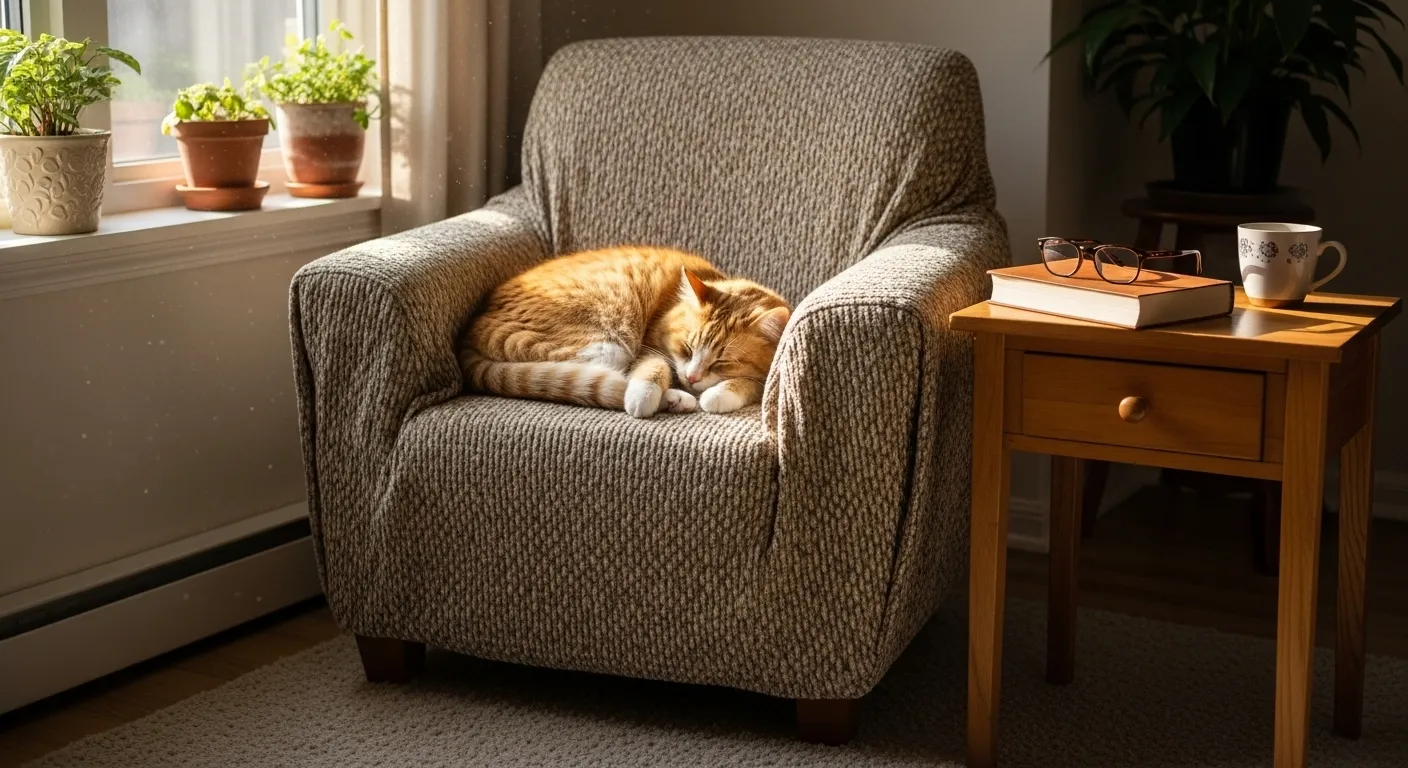
Retirement often brings the gift of time—time to relax, time for hobbies, and time for quiet reflection. But for many, these quiet moments can sometimes feel a little too quiet. The companionship of a pet can transform a house into a home, filling it with warmth, laughter, and unconditional love. The benefits of pets for seniors are well-documented, from lowering blood pressure and reducing stress to providing a wonderful reason to get up and move each day.
Choosing the right animal friend, however, is a decision that deserves careful thought. The best pet is one that fits seamlessly into your lifestyle, energy level, and living situation. This guide is designed to help you explore some of the most wonderful and senior-friendly pets, empowering you to find a companion that will bring you joy for years to come.
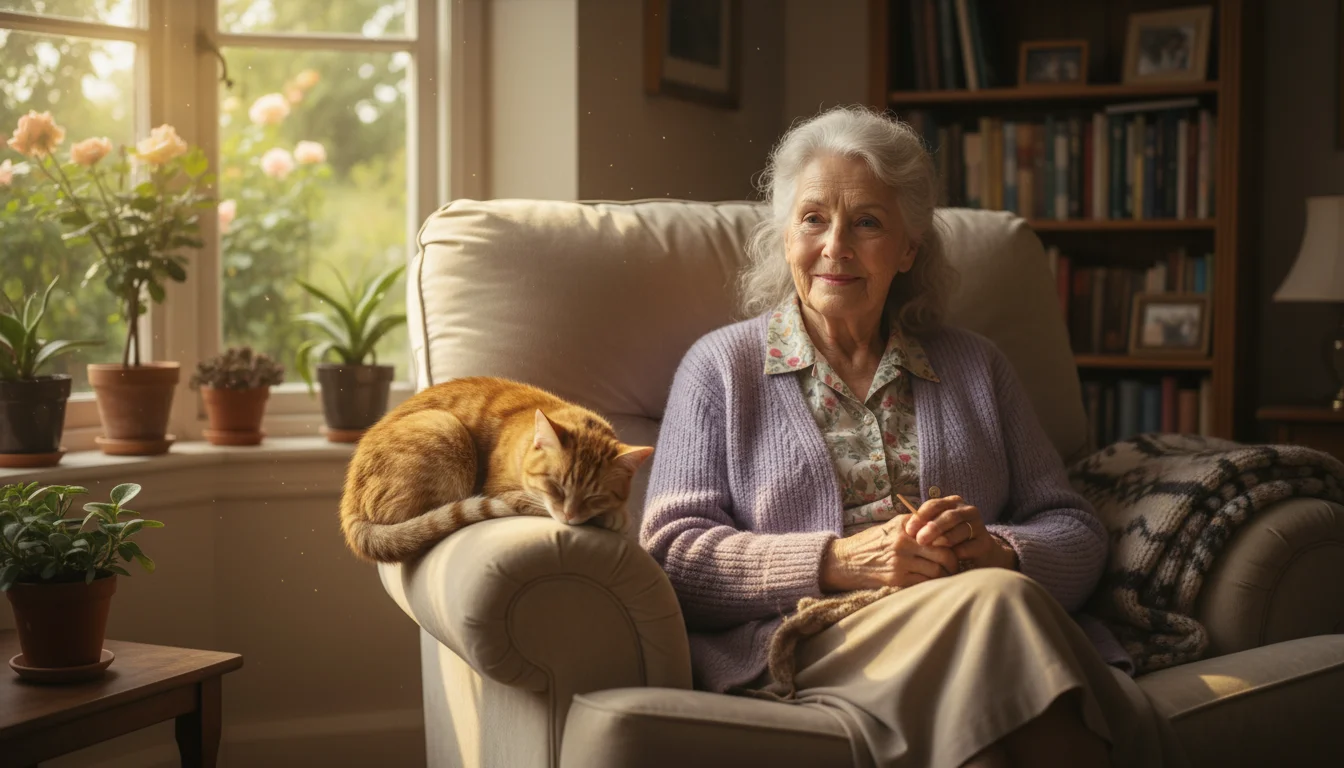
The Mature, Independent Cat
The ‘Why’: For many older adults, a cat is the quintessential low-maintenance companion. They are famously independent, content to nap in a sunbeam while you read a book, but ready to offer a comforting purr and a warm lap when you settle in for the evening. Unlike dogs, they do not require daily walks, making them an excellent choice if you have mobility concerns. An adult cat’s personality is already formed, so you know exactly what you’re getting—be it a cuddly lap-sitter or a playful observer.
The ‘How’:
- Adopt, Don’t Shop: Consider visiting a local animal shelter and asking to meet their adult cats (age 2 and up). These cats are often overlooked in favor of kittens but are typically calmer, already litter-trained, and immensely grateful for a second chance at a loving home.
- Consider Coat Length: A short-haired cat requires very little grooming, while a long-haired cat like a Persian or Ragdoll will need regular brushing to prevent matting. Be realistic about how much grooming you are willing and able to do.
- Setup for Success: Ensure the litter box is in a location that is easy for you to access for daily scooping. Raised food and water bowls can also make mealtime easier for both you and your new friend. Ask the shelter about the cat’s history to find one that is comfortable in a quiet home.
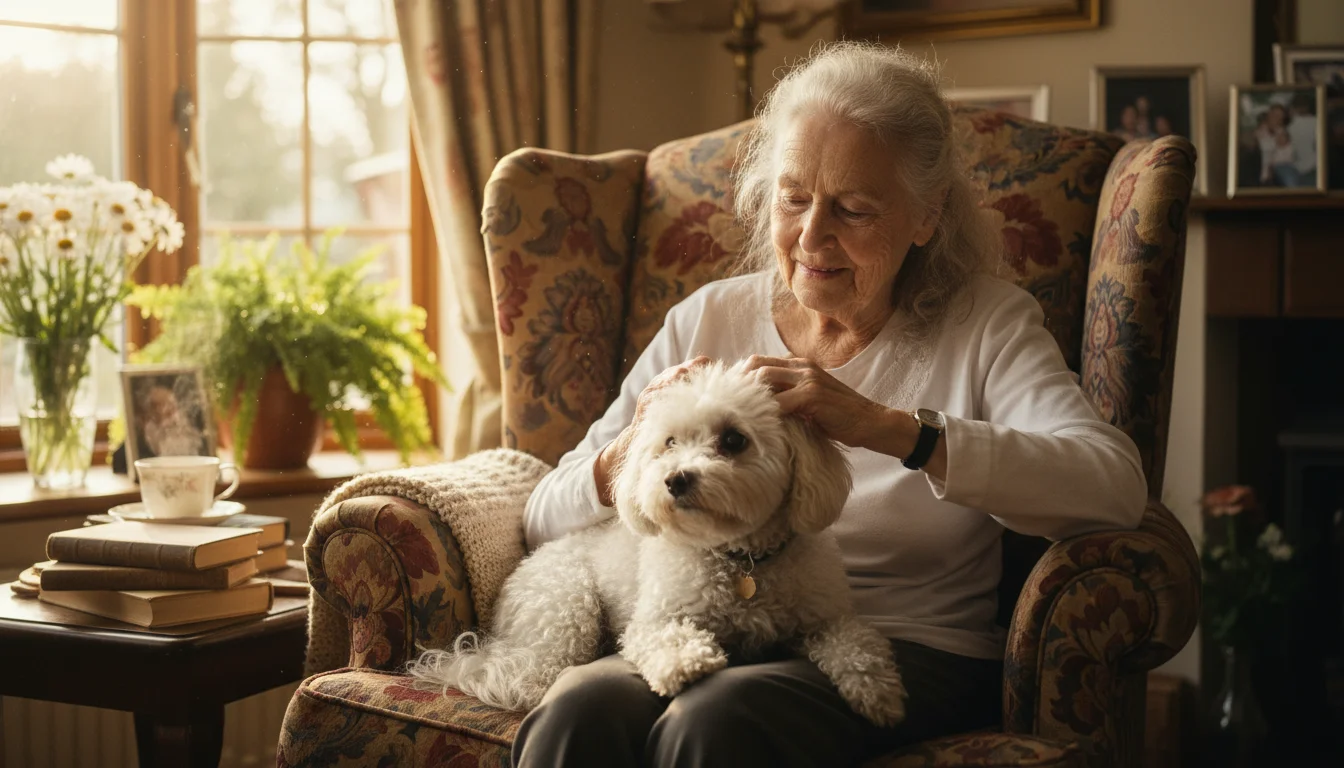
The Small, Affectionate Dog
The ‘Why’: A small dog can be a fantastic motivator for staying active and social. The need for short daily walks provides gentle, regular exercise and a chance to get fresh air and chat with neighbors. The unwavering loyalty and affection of a canine companion can be a powerful antidote to loneliness, providing structure, routine, and a constant, loving presence in your home.
The ‘How’:
- Choose the Right Breed: Look for breeds known for their gentle temperament and lower energy needs. Excellent senior-friendly pets include the Cavalier King Charles Spaniel (a true lap dog), the Bichon Frise (hypoallergenic and cheerful), or a Miniature Poodle (intelligent and trainable). Avoid high-energy terriers or working breeds that require intense exercise.
- Factor in a Budget: Remember that dogs require a greater financial commitment than most other pets. Factor in the cost of quality food, regular vet check-ups, vaccinations, grooming, and potential emergency care.
- Think About Training: A well-behaved dog is a joy. Consider enrolling in a basic obedience class to help you bond with your new pet and establish clear communication from the start. A local trainer can offer great support.
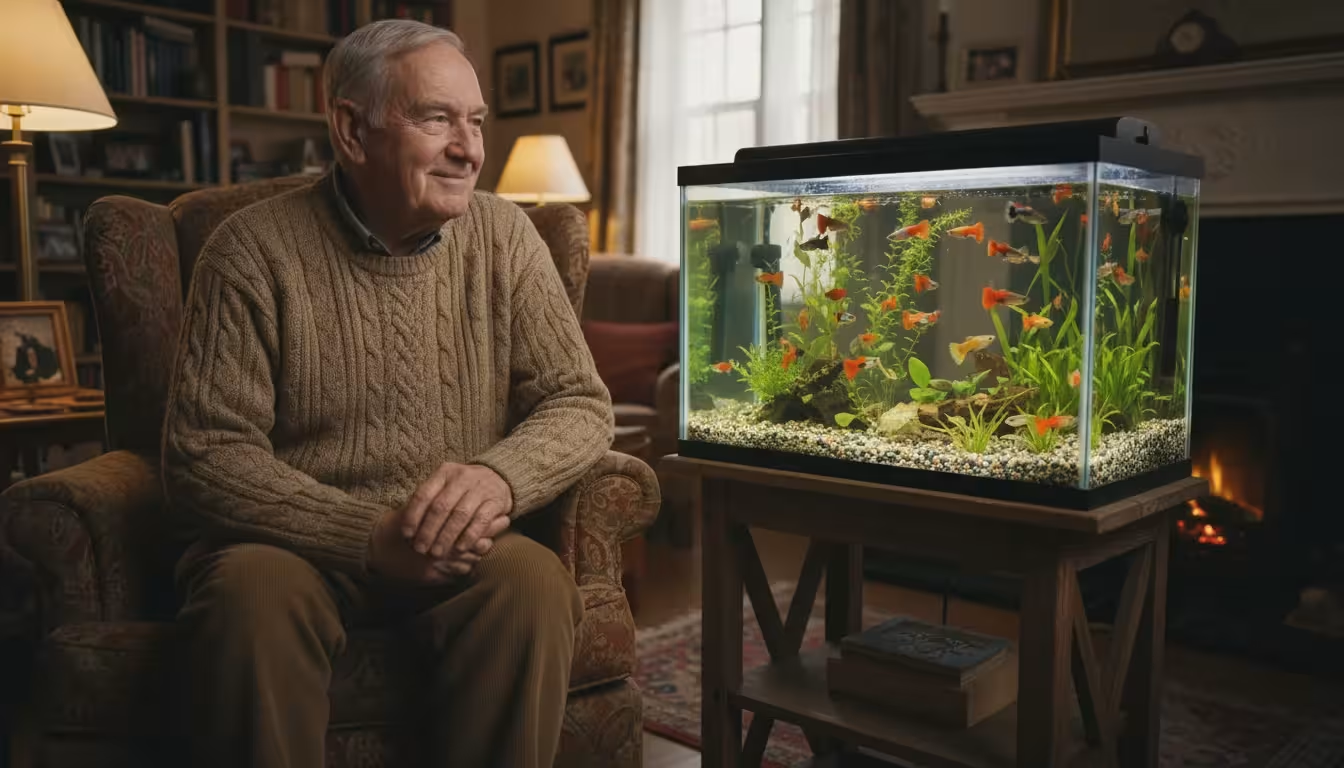
The Serene Aquarium of Fish
The ‘Why’: If you are looking for a pet that provides tranquility and beauty without the physical demands of care, an aquarium is a perfect choice. Watching fish glide through the water is meditative and has been scientifically shown to lower heart rate and reduce feelings of anxiety. They are quiet, clean, and ideal for smaller living spaces or for those with allergies.
The ‘How’:
- Start Small and Simple: A 10 or 20-gallon freshwater tank is a great starting point and is much easier to maintain than a large, complex setup. You’ll need a tank, a filter, a small heater, gravel, and a few simple decorations.
- Pick Hardy Fish: Ask the pet store for hardy, low-maintenance fish. Great options for beginners include Guppies, Platies, Zebra Danios, or a single, stunning Betta fish (Siamese Fighting Fish).
- Establish a Routine: The key to happy fish is a consistent routine. This typically involves a small daily feeding and a partial water change (about 25%) once a week. Many pet stores can provide a simple checklist to get you started.
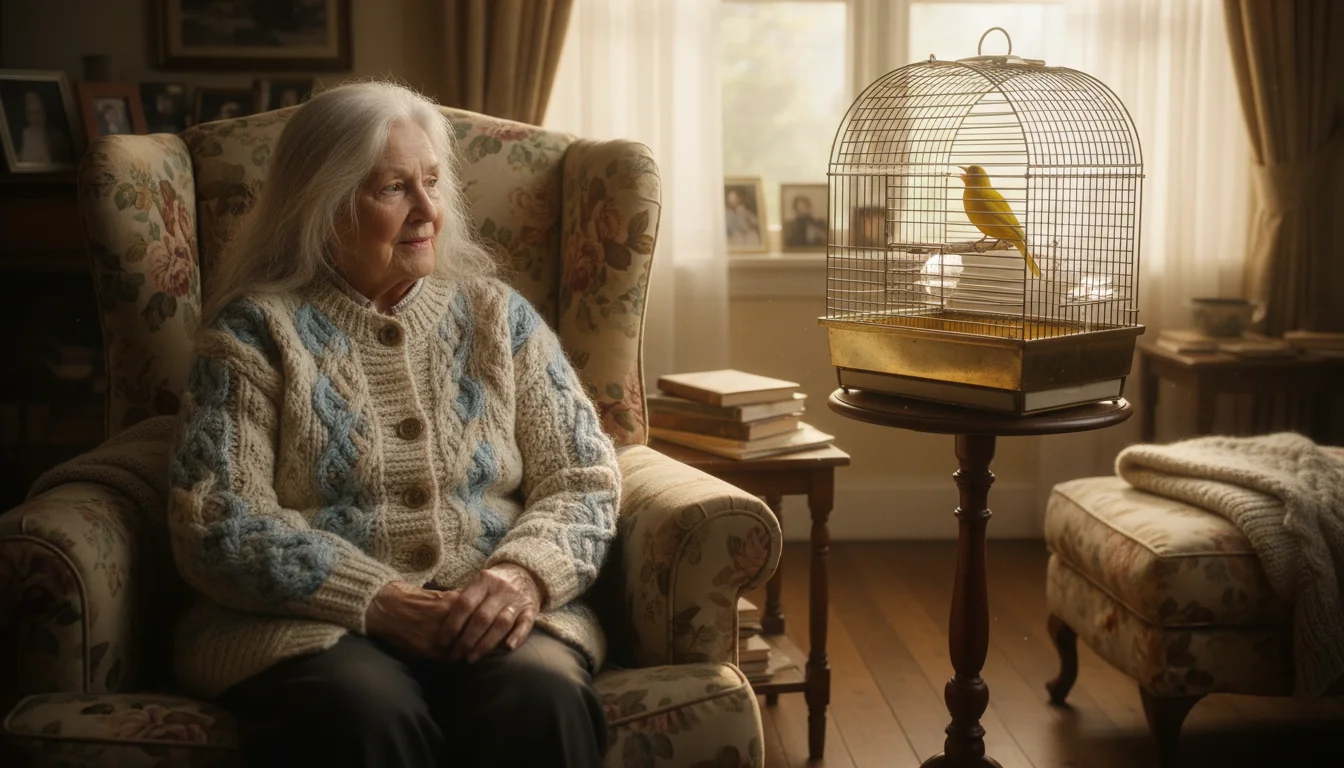
The Cheerful Companion Bird
The ‘Why’: A bird can fill your home with cheerful sounds and music. For someone who spends a lot of time at home, the gentle chirping of a canary or the playful chatter of a budgie (parakeet) can be wonderful company. They require a relatively small amount of space and can form surprisingly strong bonds with their owners, offering years of interaction and joy.
The ‘How’:
- Select Your Sound Level: Decide if you want a bird you primarily listen to or one you interact with. Canaries and Finches are admired for their beautiful songs but are generally hands-off. Budgies and Cockatiels are more social and can be trained to sit on your hand and even mimic speech.
- Cage Placement is Key: The cage should be placed in a room where you spend a lot of time, but not in the kitchen, as fumes from cooking can be harmful to birds. Avoid placing it in direct sunlight or in a drafty spot.
- Daily Care: Care is straightforward and involves providing fresh food and water daily and cleaning the paper lining at the bottom of the cage. A full cage cleaning is typically needed once a week.

The Perfect Match: A Senior Pet
The ‘Why’: One of the best-kept secrets in the world of pet companionship is adopting a senior pet. An older dog or cat (typically age 7+) is the definition of a “what you see is what you get” companion. They are past the energetic and often destructive puppy or kitten stage. Their personalities are fully developed, they are almost always housetrained, and they understand basic commands. Most importantly, a senior pet seems to understand that they’ve been given a second chance, and they repay that kindness with immense love and gratitude.
The ‘How’:
- Ask About Senior Programs: Many shelters have “Seniors for Seniors” adoption programs that offer reduced adoption fees when an older adult adopts a senior animal. This is a fantastic way to find your perfect match.
- Inquire About Their History: Ask the shelter staff everything you can about the pet’s background. What was their previous home like? Are they good with quiet environments? Do they have any known health issues? This information is vital for making a good match.
- Prepare for Their Needs: An older pet may have some age-related health issues, like arthritis. Be prepared to provide a comfortable orthopedic bed, raised food bowls, and potentially ramps for getting onto a sofa or bed. The love they give in return is more than worth it.
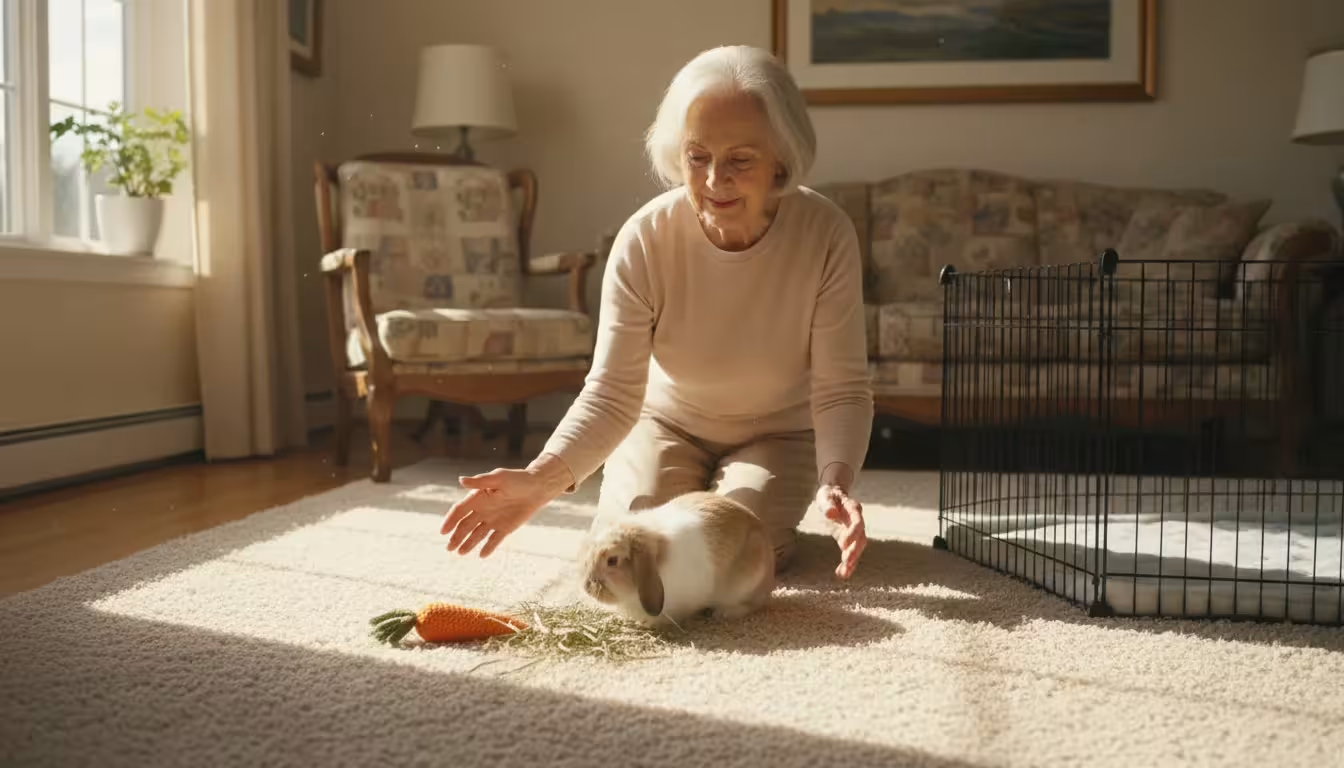
The Gentle and Quiet Rabbit
The ‘Why’: For those seeking a furry, cuddly companion without the barking of a dog or the aloofness of some cats, a rabbit can be a delightful alternative. Rabbits are quiet, gentle, and can be surprisingly affectionate and playful. With a little patience, they can even be litter-trained, allowing them supervised time to hop around a room and interact with you.
The ‘How’:
- Provide a Safe “Home Base”: Rabbits need a large indoor cage or pen that serves as their safe space for eating, sleeping, and using their litter box. This should be a place they can always retreat to.
- Understand Their Diet: A rabbit’s diet is very specific and crucial for their health. It should consist mainly of unlimited timothy hay, a small portion of high-quality pellets, and fresh leafy greens daily.
- Rabbit-Proof Your Home: If you plan to let your rabbit roam, you must “rabbit-proof” the area. This means covering all electrical cords and removing any toxic plants, as they love to chew. Find a veterinarian in your area who has experience with rabbits.
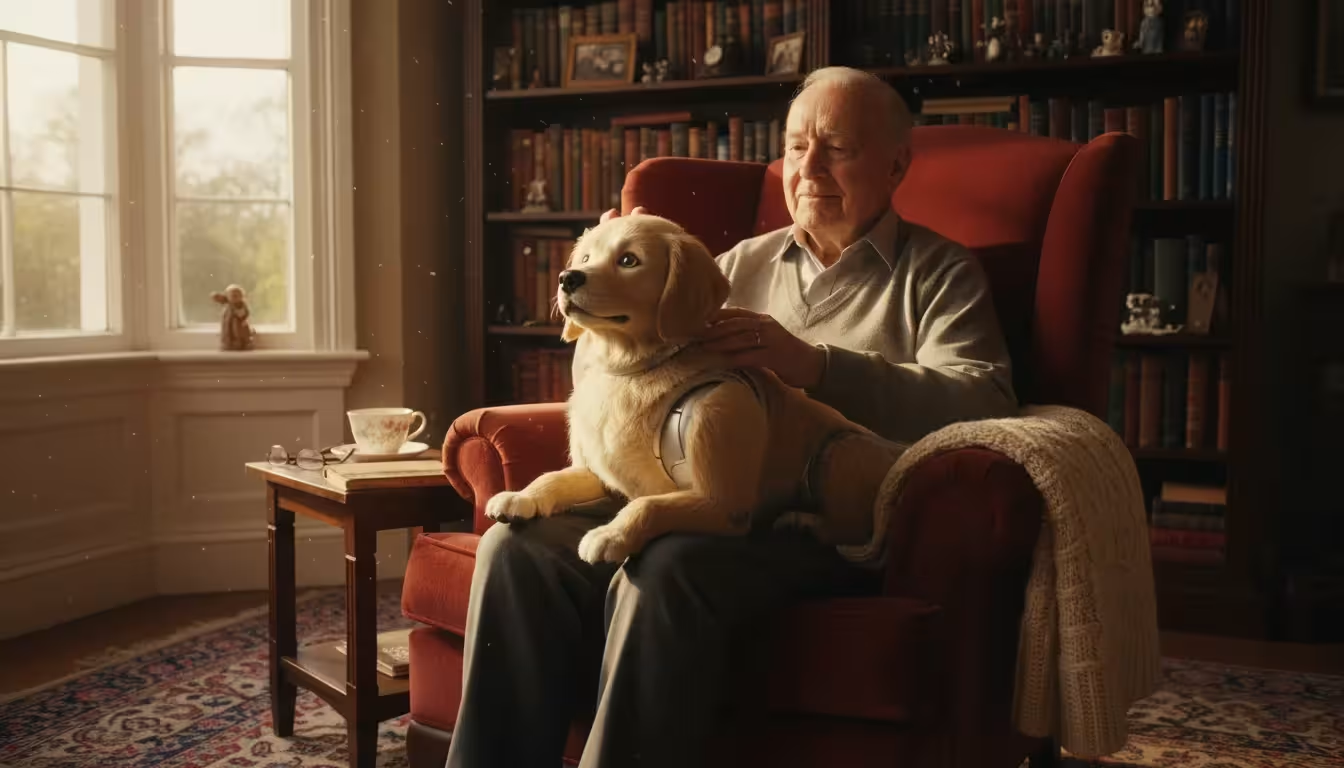
The Innovative Robotic Companion
The ‘Why’: We now live in an age where technology can provide comfort in amazing ways. For older adults who cannot care for a live animal due to severe allergies, mobility limitations, financial constraints, or strict housing rules, a robotic companion pet is a revolutionary and compassionate solution. These lifelike cats and dogs have soft fur, make realistic sounds, and respond to touch and voice. They provide a tangible source of comfort and interaction, helping to combat loneliness without any of the responsibilities of pet ownership.
The ‘How’:
- Explore the Options: Brands like Ageless Innovation’s “Joy for All” Companion Pets are specifically designed for this purpose. You can choose from different cat and dog breeds. Read reviews and watch videos online to see them in action.
- No Shame, All Comfort: Embrace this as a practical tool for well-being. These pets are designed to fulfill a need for companionship. Holding a purring robotic cat can be just as soothing as the real thing for many people.
- The Perfect Gift: This can be a wonderful and thoughtful gift for a loved one in a nursing home or assisted living facility where live pets are not allowed. It provides a constant, comforting presence that requires nothing more than a change of batteries.
Bringing a pet into your life is a journey of the heart. By honestly assessing your own lifestyle and abilities, you can find a loyal friend who fits perfectly into your world. Whether it’s the quiet purr of a cat, the happy wag of a dog’s tail, or the gentle swish of a fish’s fin, the right pet companion is waiting to fill your days with love.
For expert guidance on senior health and finance, visit Eldercare Locator, AARP, Alzheimer’s Association and American Heart Association.
|
Fact-Checked Content
Our editorial team reviews all content for accuracy and updates it regularly. Learn about our editorial process →
|







